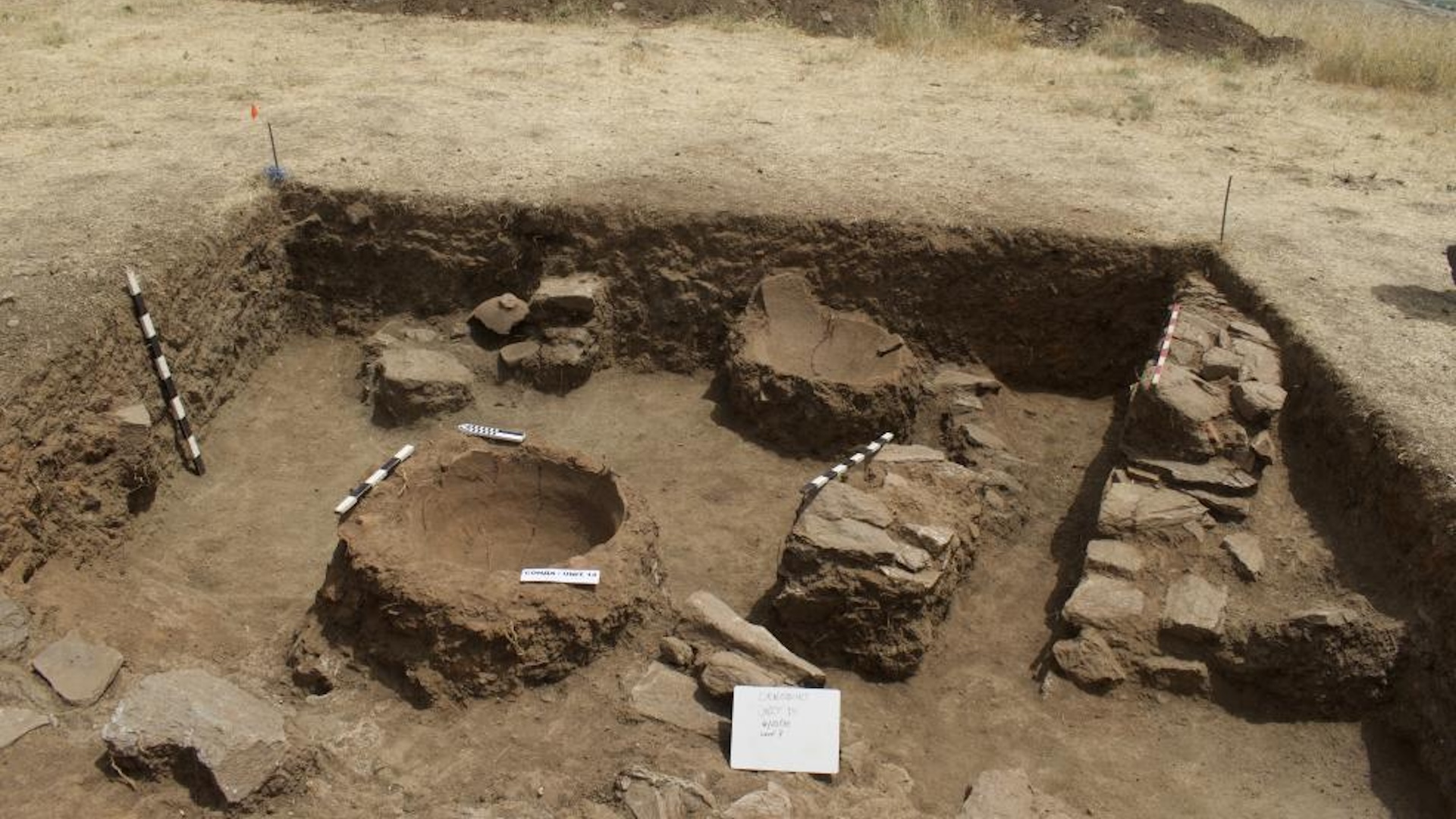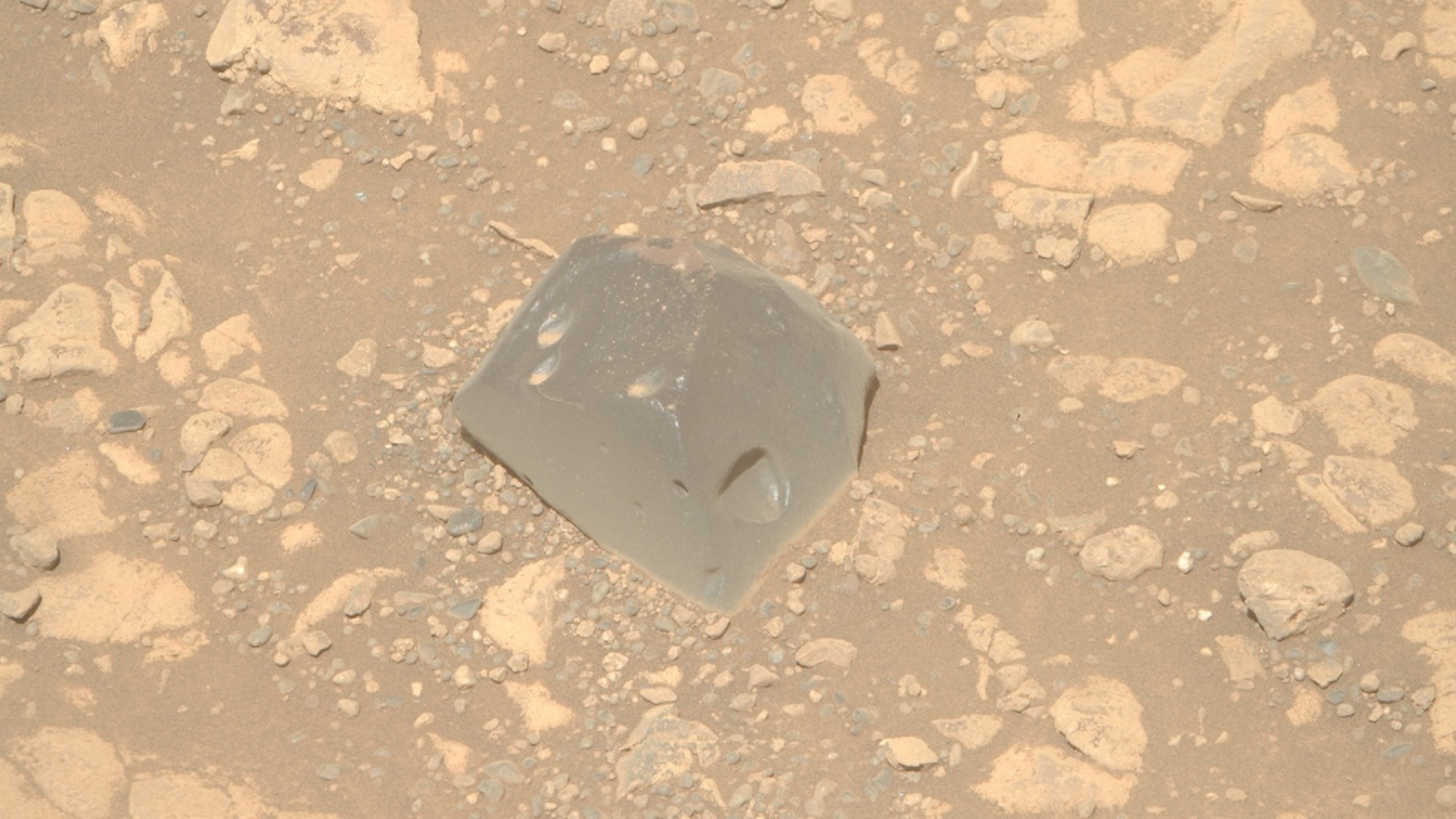Santorini is having a swarm of tiny earthquakes. Is the Greek isle about to erupt?
An uptick in seismic activity on the volcanic island of Santorini has raised concerns about a potential eruption.

Small earthquakes on Santorini have raised concerns about a volcanic eruption on the Greek island.
Experts and civic leaders met at the Greek Climate Crisis and Civil Protection Ministry Wednesday (Jan. 29) to discuss the uptick in seismic activity on Santorini, an island in the Aegean Sea that curves around a flooded volcanic caldera, according to the Associated Press. The increase in seismic activity is concentrated on the caldera's northern end, they reported.
Seismic activity has gently stirred the island over the past few weeks. A seismic station on Santorini run by the Aristotle University of Thessaloniki detected at least 39 small earthquakes, mostly magnitude 3.5 or less, Friday (Jan. 31).
The island got its current shape via the Minoan eruption in 1600 B.C. — one of the largest volcanic eruptions in human history, according to the Lamont-Doherty Earth Observatory in New York. It may have inspired tales of the lost city of Atlantis, which was said to have sunk under the sea.
The volcano has experienced similar periods of unrest before without erupting. Between 2011 and 2012, there was a period of seismic activity related to magma movement below the surface, according to the Smithsonian National Museum of Natural History's Global Volcanism Program. This was preceded by a period of subsidence, or sinking, at the small island of Nea Kameni in the center of the sunken caldera.
Related: The 20 largest recorded earthquakes in history
The last time the volcano erupted was in 1950. This was a relatively small eruption, producing a lava dome and ash clouds that rose several hundred meters into the sky. An eruption in A.D. 726 reportedly caused the sea to boil and sent pumice chunks flying 250 miles (400 kilometers) away. The volcano has been causing disturbances for a long time: A 2024 study found that it erupted more than half a million years ago, ejecting a stunning 21.6 cubic miles (90 cubic kilometers) of rock and ash.
Sign up for the Live Science daily newsletter now
Get the world’s most fascinating discoveries delivered straight to your inbox.
Scientists don't expect the current unrest to lead to such a dramatic outburst.
"What we must realize is that the Santorini volcano produces very large explosions every 20,000 years," Efthymios Lekkas, seismologist and head of the scientific monitoring committee for the Hellenic Volcanic Arc, said on Greece's ERT television Thursday (Jan. 30), according to the Associated Press. "It's been 3,000 years since the last explosion, so we have a very long time ahead of us before we face a big explosion."
Lekkas met with the deputy minister responsible for natural disaster recovery, the head of Greece's fire department, and local officials, according to the AP report.

Stephanie Pappas is a contributing writer for Live Science, covering topics ranging from geoscience to archaeology to the human brain and behavior. She was previously a senior writer for Live Science but is now a freelancer based in Denver, Colorado, and regularly contributes to Scientific American and The Monitor, the monthly magazine of the American Psychological Association. Stephanie received a bachelor's degree in psychology from the University of South Carolina and a graduate certificate in science communication from the University of California, Santa Cruz.
You must confirm your public display name before commenting
Please logout and then login again, you will then be prompted to enter your display name.









